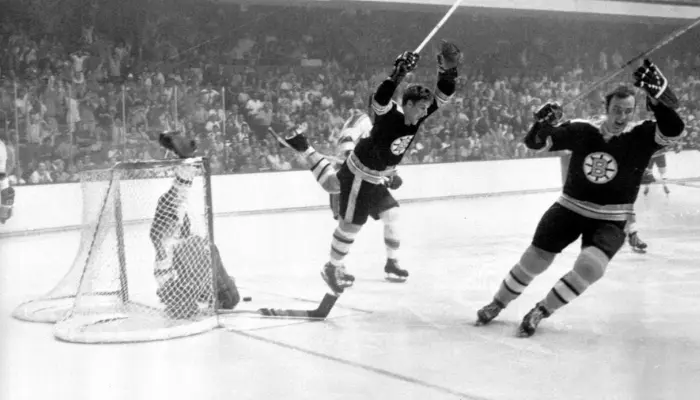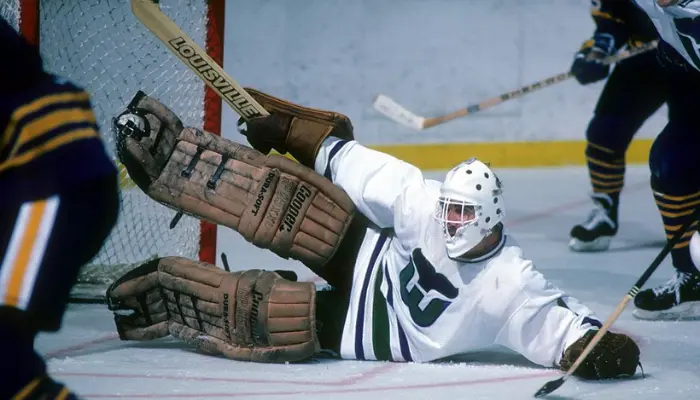As you know NHL has become the most famous and favorite sport of people all over the world. Although the NHL is the most renowned and well-liked hockey sport in the world, its skaters do originate from specific geographic regions.
So, where are the NHL players by nationality? It is fair to state that most NHL players are from regions with snowy or cold weather. There must be at least a little snow elsewhere in a state before it can generate an NHL player. Although there are skaters from hotter weather, the majority of players come from areas with cooler regions.
Let’s have a look at the detailed information about NHL players. Also, I will talk about the recent list of all the NHL players in different countries.
Below is the information that demonstrates the states that are featured in the NHL and their share of the overall number of skaters. Because several nations have only one or two players, I have combined them under the “other” section.
Let’s have a look at the complete list of all the nations covered in the NHL.
| Country | 1970 | 1980 | 1990 | 2000 | 2010 | 2015 | 2019 |
| Canada | 96.1% | 81.9% | 73.9% | 54.8% | 52.8% | 49.0% | 43.5% |
| US | 2.3% | 11.9% | 16.6% | 15.5% | 24.0% | 24.6% | 28.6% |
| Sweden | 0.3% | 3.4% | 2.3% | 4.8% | 6.4% | 8.6% | 9.7% |
| Russia | 0 | 0 | 1.6% | 7.4% | 3.4% | 4.1% | 3.9% |
| Finland | 0 | 0.9% | 1.5% | 3.5% | 3.1% | 3.9% | 4.9% |
| Czech | 0 | 0.5% | 2.6% | 7.3% | 4.3% | 3.9% | 4.0% |
| Other | 2.3% | 1.4% | 1.5% | 6.7% | 6% | 5.9% | 5.4% |
After every ten years, the NHL’s squad completely changes. It was highly biased in support of Canadians until the 1980s. But since then, other nations have improved the standard of their advancements.
These growth mechanisms have exceeded Canada in so many areas. Thus, many other nations are now developing NHL all-stars to be recognized in the league.
Let’s examine the composition of the NHL from the 1970s to the present day.
NHL in the 1970s
Before the 1970s, Canada controlled the sport. There weren’t many American NHL skaters, and also there weren’t many foreign players. Every squad consists of Canadian professionals and there would be just one non-Canadian on each squad. NHL players from other countries first appeared in the 1970s.
As the tournament was a non-contact sport until 1969, few skaters were familiar with or interested in participating in the NHL. So, the number of foreign participants began to increase after the non-NHL sport adopted body checking.

Sweden was the primary foreign nation to begin sending professionals to the NHL. Although there had been Swedes before him, Borje Salming of the Toronto Maple Leaf had the biggest impact on the Swedes of the 1970s. He was the first non-North American player to participate in an NHL squad.
Worldwide, the USSR hockey club became well-known in the 1970s as well. Besides the fact that none of the three players such as Tretiak, Kharlamov, and Mikhailov would ever participate in the NHL, they informed the world of the fact that hockey was growing to play outside of Canada.
Related Post: The Complete Guide To The First NHL Game Of Sidney Crosby
NHL in the 1980s
Even though Canada started to win, more players from other countries were beginning to compete. The first significant wave of Swedish professionals arrived in the 1980s. Swedish people appreciate their country, which is the initial thing you should know about them.
Many Swedes would travel to North America but would only remain for a long period to grow their young families there. Hakan Loob of the Calgary Flames serves as a prime example.

Besides being at the top of his profession in 1989, Loob returned to Sweden after that campaign by winning the Stanley Cup and recording more than 50 goals.
Today, this is not an issue but overseas players are still beginning to join the NHL. The Wonder on Ice at the Winter Games in Lake Placid in 1980 was the most important event that would occur in the 1980s. It occurred to alter the cultural environment.
How did the NHL country’s involvement in an Olympic hockey match have such a major effect?
As you may know, the Mystery on Ice came when the opposition United States squad defeated the USSR squad in the semifinals to win the gold medal.
There were no primary influences on the number of Americans participating in the NHL. But long-term changes were made as a result. So many American children started to play hockey as a result of The Mystery on Ice.
This would result in the first significant infusion of dominant American NHL players into the United States during the 1990s. All the hockey players, including Jeremy Roenick, Mike Modano, Mike Richter, and Keith Tkachuk, were young spectators to the Mystery on Ice.
Thus, the first group of dominant American NHL teams joined the team as a result of this incident.
Related Post: What were the First 4 NHL Teams?
NHL in the 1990s
The Canadian hockey program was overrun by the world as the sport developed both nationally and internationally. Although they were still the top-ranked nation, Canada was no more as dominant as they were once.
In addition to getting closer to actual statistics, several nations were also doing so in terms of technical ability. The Russians had brought in the greatest number of foreign participants in the 1990s. The Soviet Union’s socialism was fading, and the NHL was doing well with all of its participants.

Sergei Pryakhin was the first Russian skater to compete in 1989. Pryakhin was a bottom-six center for the Calgary Flames who usually served as a trigger for the activity to follow. The actual Russian starters began to arrive after Pryakhin.
Alexander Mogilny and a few others resigned, but soon Bure, Fetisov, Federov, Makarov, and Larionov were among the many players who entered through the front doors.
Sergei Federov became the first Russian to receive the NHL’s Campbell Trophy in 1994. The New York Rangers were the initial Russian team to have their surnames inscribed on the Stanley Cup.
NHL in the 2000s
The ups and downs of the Russians might occur in the 2000s. Russians kept playing hockey but few of them began to go to the NHL. The Kontinental Hockey League, a Russian hockey league that was formed to compete with the NHL is the cause of this.
Many of the second-tier skaters would remain in Russia. On the other hand, the NHL receives big Russian performers like Malkin, Ovechkin, and Bobrovsky. By giving player wages in the KHL tax-free, the Russians wanted to lure Russian professionals.

The KHL appeared to be a real challenge to the NHL in the early 2000s. But financial issues have caused the club to decline.
From a global hockey perspective, the most interesting development was the rise of all the “other” nations in the 2000s. I don’t include the United States, Canada, Russia, Finland, Sweden, or the Czech Republic when I say “all the other states.”
Starting in the NHL, NHL teams began to recruit and later utilize talented players from many different European nations. High-end NHL players include Anze Kopitar from Slovenia and Thomas Vanek from Austria. The NHL began to genuinely transform into a diversified international club in the 2000s.
Related Post: What are the most popular teams in the NHL?
NHL 2010s to Present
Wayne Gretzky’s 1988 move to the Los Angeles Kings was among the significant events in the 1980s. It helps to boost modern American involvement. Since Gretzky was traded to the Kings, hockey has become one of the most popular events in Los Angeles.
It not only helped Los Angeles become more popular, but it also allowed the NHL to develop into a variety of hotter American cities. They are also known as non-traditional hockey areas.
The places that currently have NHL teams are San Jose, Anaheim, Las Vegas, Phoenix/Arizona, Dallas, Nashville, Carolina, Tampa Bay, and Miami/Florida. This is because of the Gretzky deal. The most stunning aspect of this is that those regions are now beginning to generate NHL-caliber performers.

Without the Gretzky deal and the ensuing growth, individuals from Texas, Tennessee, and California would not be selected for the NHL playoffs.
Along with the United States’ program coming up to Canada’s, the remainder of the world has also achieved similarly. Other nations do not have as many people performing hockey as Canada. But they are still generating professionals of the same level.
All of the European nations other than Finland, Sweden, and the Czech Republic are expected to create the next team of players. Switzerland, Denmark, Norway, and Germany keep producing professionals of a better caliber.
The current list of all the countries represented in the NHL
| No. | Country | No. of Players | %Age of Players |
| 1 | Canada | 271 | 42.7% |
| 2 | United States | 157 | 24.8% |
| 3 | Sweden | 76 | 12.0% |
| 4 | Russia | 32 | 5.0% |
| 5 | Finland | 31 | 4.9% |
| 6 | Czech Republic | 24 | 3.8% |
| 7 | Switzerland | 11 | 1.7% |
| 8 | Slovakia | 9 | 1.4% |
| 9 | Denmark | 7 | 1.1% |
| 10 | Germany | 7 | 1.1% |
| 11 | Latvia | 3 | 0.5% |
| 12 | Austria | 2 | 0.3% |
| 13 | France | 2 | 0.3% |
| 14 | Slovenia | 1 | 0.2% |
| 15 | Norway | 1 | 0.2% |
Conclusion: Where do NHL players come from?
Most of the NHL players by nationality are from cold weather areas. Also, some NHL players are from hot weather places but fewer than those from cold climates. Overall, NHL players are chosen from all over the world from different states.


